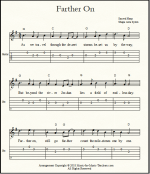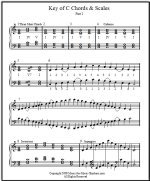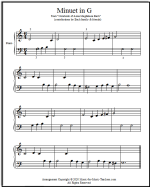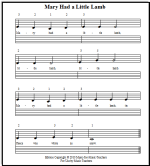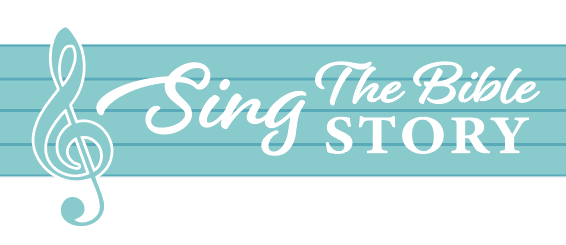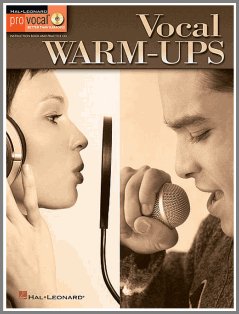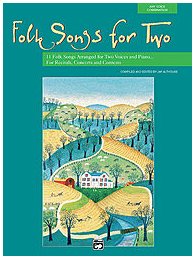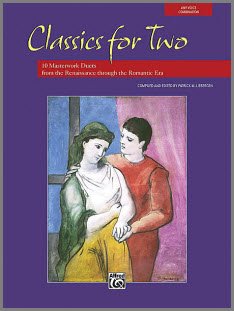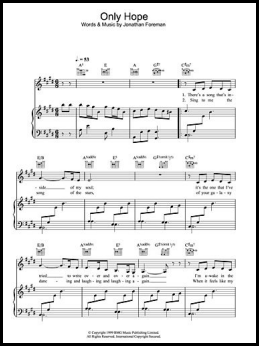Vocal Warm-Up Exercises
for Singing Through the Break
Vocal warm-up exercises for showing students how to sing through the break. These FREE singing warm-ups may be primarily an exercise in AWARENESS at first!
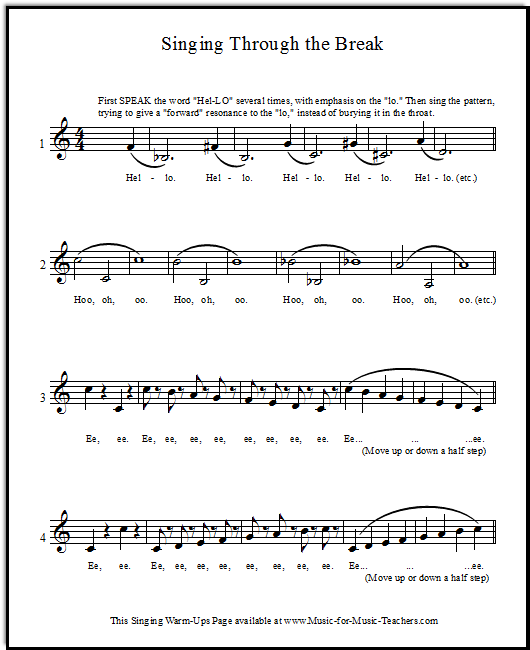
Here is what the "Singing Through the Break" warm-ups page looks like; scroll down the page for the download link.
Beginning singing students tend to sing with strength (even if softly and shyly) in the higher part of their voices. Vocal teachers usually call this upper region the "head register" or "head voice."
But as voices drop down below F or E above Middle C, the volume of kids' voices thin out and become breathy, or "covered"-sounding.
Or they may be used to singing just the opposite way -- strong and loud down low, like a country singer! But as they approach B or C above Middle C, oh no!
Their voice may acquire a strained, pushing, pump-up-the-volume sound. or they may go into a strangled squeak, convinced they cannot reach beyond their comfort zone.
Your job is to convince them that their vocal range is both higher and lower than they imagine. Little by little their vocal warm-up exercises should stretch their range at both ends.
But what about that awkward spot right in the middle? That's the spot where their vocal folds seem to encounter a little bump, almost like a hiccup, and beyond which the quality of the voice changes.
These vocal warm-up exercises will help your singing students identify the places where they pass through a "break." (Depending on whether they're singing from the bottom up, or from the top down, they may feel a break at a different note.)
As they practice moving through the break and begin to "feel" it coming, you can help.
For example, tell them to sing with the right amount of air -- not pushing too hard right on a transition note. ("Push" is probably one of those words that doesn't belong in a voice teacher's vocabulary!
"Lighten up", "steady air flow", or "control the breath" might be better phrases than "don't push!") Also, talk about placing the tone "forward" instead of "down."
"Hoo - oh - oo" is a great singing warm-up that I picked up years ago from a friend who was assistant director for the Seattle Boys Choir and Seattle Girls Choir. She said this was a frequent vocal warm-up exercise to get boys' voices bridging an octave.
I have found it just as useful with girls, and with adults. The "Hoo" is high and open, the "oh" is big and low. Dropping a whole octave really gives you the feeling of the different voice registers.
The "Hel-LO" vocal warm-up exercise is one I devised myself (as far as I can remember). I use it when singers have a melody which drops down toward Middle C or below for a few notes, causing their voice to thin out and disappear.
Young singers who don't understand how to transition into another register believe they must continue with the head voice on down the scale, where they are unable to sing with any volume.
First I speak the word "Hel-LO" to them a couple of times, and ask students to say it with me, emphasizing the "LO" part of the word. We say it together, making "LO" loud and forward in the mask, not back deep in the throat - though it will be placed low in the jaw, and not in the nasal region.
Then we turn the talking into singing... I turn spoken "LO" into a sustained tone, and now I'm singing it, easy and forward and with a bit of volume, but not pushing.
The "LO" sounds and feels different than the higher note, "Hel-". For now, it's okay that it is VERY different. Gradually they will learn how to blend the different registers so that high and low notes alike sound as if the same person is singing them!
Try it -- with this vocal warm-up exercise, every student I've ever had has been able to sing the low note with better volume.
As we continue to use the "Hel-LO" over multiple lessons, the singing muscles memorize the feeling of the drop into chest voice, and it becomes easier to switch to it from head voice, and to blend the two.
The third vocal exercise is pretty new in my studio, but I like it so much I've been using it a lot.
Kids really get "in touch" with the movement of their larynx as it travels up and down throughout this vocal warm-up.

I tell students, "Find your larynx -- voice box -- Adam's apple." (It has all of those names in English, and probably a few more.)
"Now put your fingers gently on it," (horizontally -- I demonstrate with two of my fingers laid across my larynx) "and feel what happens as you sing this pattern."
Then we sing exercise #3. They are made very aware of how their larynx, with the vocal folds inside of it, shifts from high to low.
The first few measures of notes are sung detached, giving the vocal folds space and time to adjust and re-position.
They will probably easily be able to feel and hear when they pass through vocal register changes. (There may be more than one!)
The goal is to maintain volume and clarity down to the bottom of the scale.
Then the descending scale pattern is repeated, but legato (smooth) instead of detached. Much harder to do!
And the object is to pass through the break(s) without an obvious "flip" sound or change in sound quality. Well, this probably will not happen right away. Lots of practice is needed to sense or feel how to sing through a descending scale.
The last exercise is just #3 reversed.

It is interesting to CLIMB the scale instead of descend it, and see that the voice wants to continue singing in the same register in which it begins.
Using this understanding, a singer learns that they can work with the notes in the middle break area, subtly carrying the chest voice higher or the head voice a bit lower to make a section of a melody easier to sing, and the transition more lovely.
I hope you find my free vocal exercise sheet helpful!
The link for the vocal exercises:
Download free vocal warm-up exercises
Dianna:
Your website is a light in the darkness. THANK YOU for all you do in helping to spread the love of music. It matters!
Recent Articles
-
Moonlight Sonata in Cm
Hello! Thank you for sharing the introduction to Beethoven's Moonlight Sonata in C minor! It will be a good trial for a certain student. Can you make -
Farther On, a Beautiful Shape-Note Hymn: vocal ensemble & instruments
Farther On is a beautiful Shape-Note hymn in the Sacred Harp tradition. Download this free hymn sheet music for ensemble, guitar, piano, & lead sheet. -
12 Major Scales Free Download for Piano: Chords, Arpeggios & Scales
12 major scales & chords: free, printable downloads. One & two-octave scales, I, IV & V chords & inversions & arpeggios, & a new PART 2! -
Bach Minuet in G Piano Music: Arrangements for All Levels
The Bach Minuet in G is a famous piece that kids enjoy playing - now with six arrangements, all of your students can conquer this piece. -
Mary Had a Little Lamb for Beginner Piano: Learn How to Add Chords
There is so much you can do with Mary Had a Little Lamb! As piano music for kids, it is unbeatable for showing them how to use chords.
Interested in songs from the Bible for your students or church? Check out my other website, SingTheBibleStory.com!
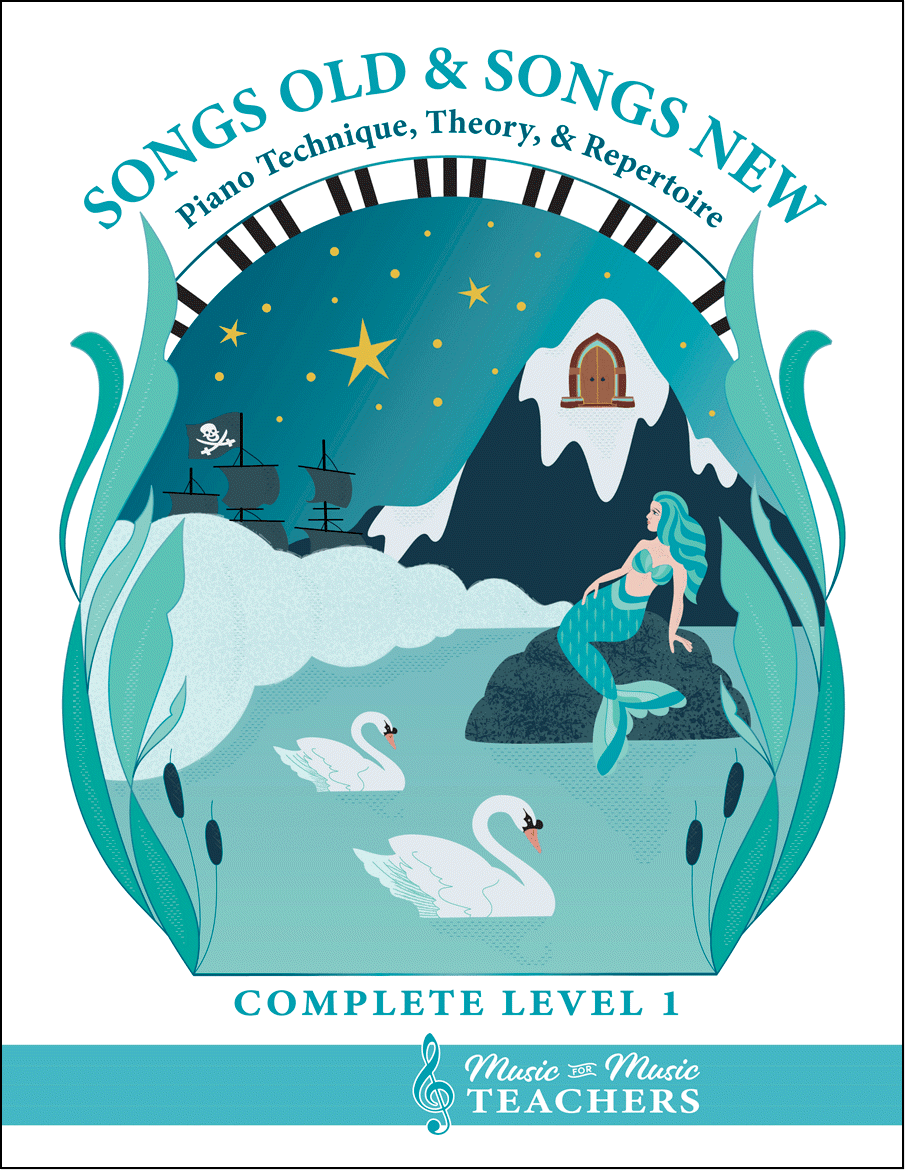
All the first-year material I give my beginner students.
Piano keyboard sheets, scales, chords, note-reading exercises, and over 256 pages of music!

This beautiful song book for piano & voice "Esther, For Such a Time as This", available as a digital download, tells the riveting story of the time when Jews in ancient Persia faced a foe named Haman, and how a brave young queen risked her life to save her people.
A good choice for a singing story-teller, an operatic group, a short theater production, or a class of children!
This book is also available from Amazon as a paperback.
This book is available as a digital download from this site. Visit this page to see some free examples from the book.
It is also available from Amazon as a paperback!
This is the perfect easy start for little pianists.
And when they start reading white-key notes on the staff, this is a fun easy resource to say each week, "Choose a new black-key song at home this week and figure it out to show me next lesson!" They will be spending more time at the piano.
A perfect read aloud storybook
for little boys or girls.
The Adventures of Tonsta highlight the travels of a very young boy with a good heart, who goes about helping folk in trouble.
With a red cap on his head and a sack of tools slung over his shoulder, Tonsta seems to meet people in distress wherever he goes.
Lots of trolls in this book - including one who gives him a Christmas gift!
Krista:
Thank you thank you thank you!! I have recently started my own vocal studio, and though I have studied music education for years in college, a private studio is a daunting task for me.
Your site has made everything seem so simple and straightforward and has helped me to really get started. It is so comprehensive and well put together. Thank you for taking the time to share your knowledge so that music can be shared everywhere. :)
Dana:
Good for you! Yes, I know just what you mean. Every new endeavor requires a little bit of chutzpah -- not to say just brazening it out a bit, because you just can't be an expert at anything until you've done it for a while. We teachers have to learn how to teach... and you have to start somewhere.
Toni:
Thank you for your wonderful website. I also teach piano, voice and guitar - spooky! My absolute passion is opera, and have opened many a singing student's ear to the beautiful melodies and voices in the repertoire.
Thank you for the wonderful warm-ups which I have downloaded, and will be using at the earliest opportunity - I will let you know how they go! Looking forward to more warm up ideas, too.
Audrey:
I just wanted to tell you that I have found your website EXTREMELY helpful!
I have a young group of children that I have started a youth choir with and I was searching for music ideas and I came across your website. THANK YOU SO MUCH!!
Comments
I'd love to know about your favorite warm-ups, perhaps passed on to you by a dear teacher, or one you have made up yourself and come to rely upon. Tell us how you use it!
What Other Visitors Have Said
Click below to see contributions from other visitors to this page...
My voice dramatically changed from one day to another
I'm a 14 year old girl,my voice is going from high to higher, from airy to airier and I don't know how to carry a tune now!
My best friend seems to …
How Can I Increase My Vocal Range?
Hello. My name is Demetria and I just want to ask you a question. First, a little background about me. I have loved music since I was a very young child. …
About the Author

Hi, I'm Dana! (Say that like "Anna".) I'm the owner of Music-for-Music-Teachers.com, and a newer site, SingTheBibleStory.com.
Like some of you, I've been playing the piano since early childhood, and have added a few other instruments along the way, plus an interest in arranging and composing music.
You can find out more about me and the reason for this website at my About Me page.


